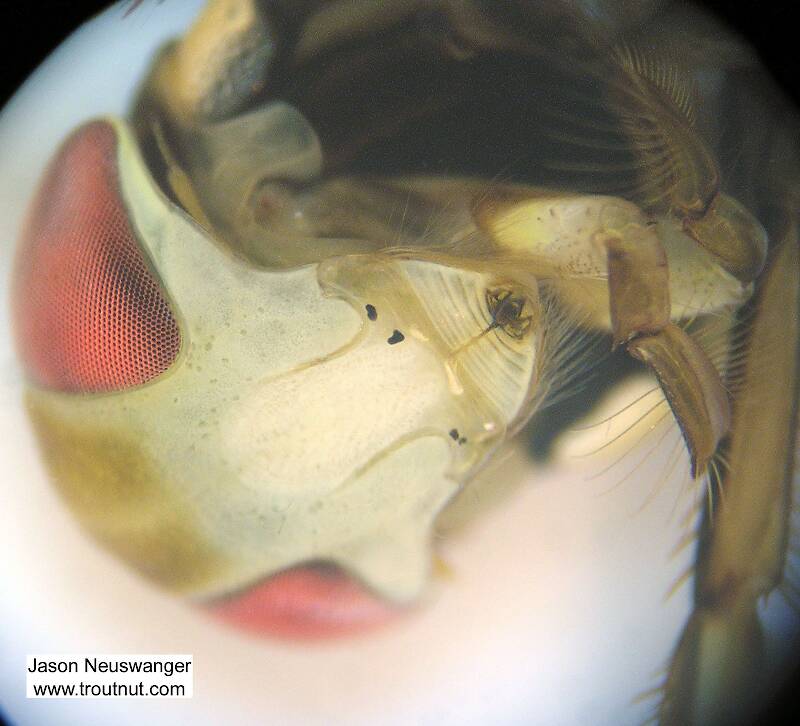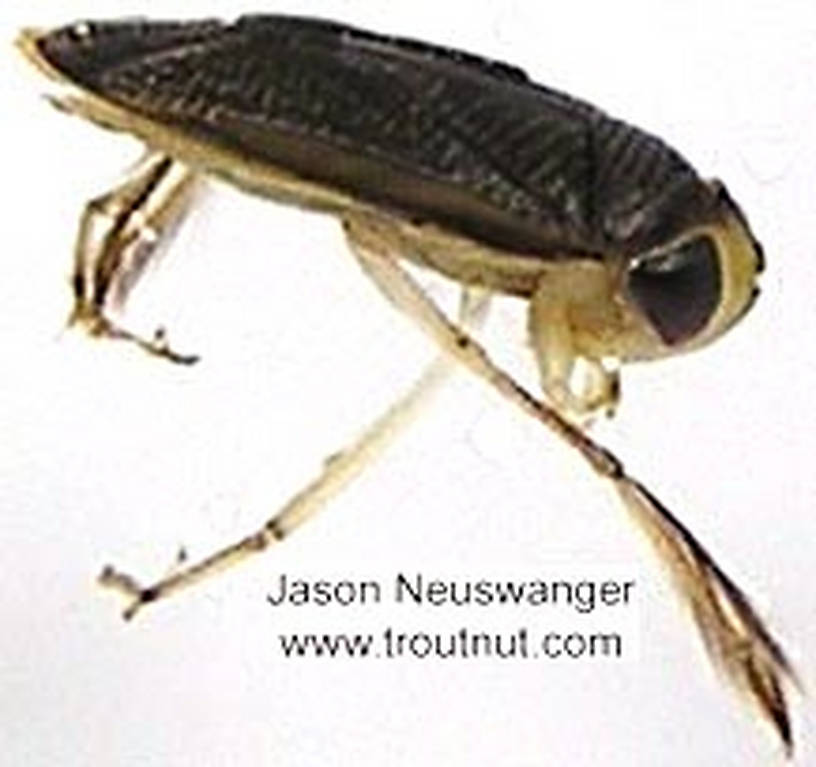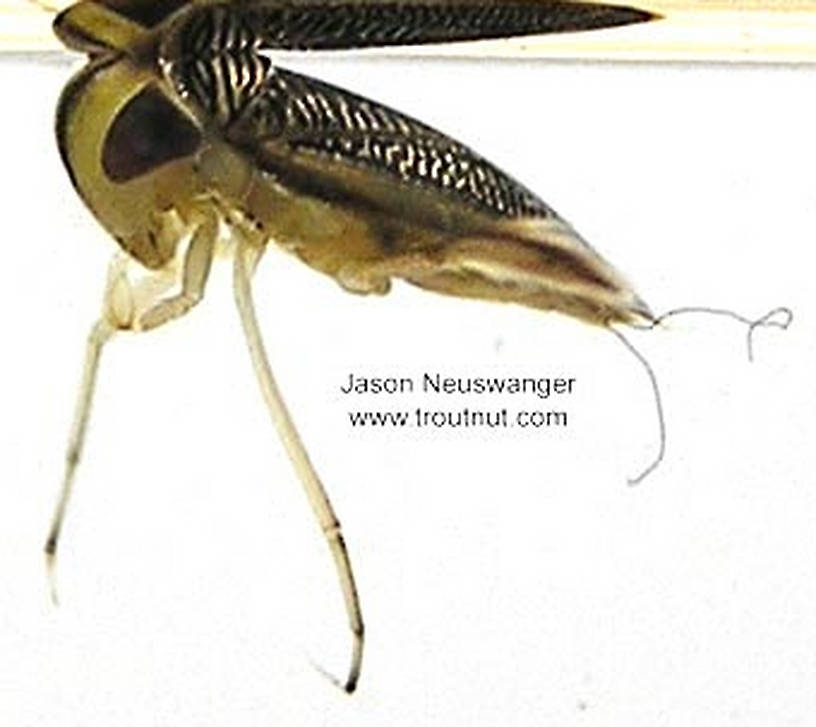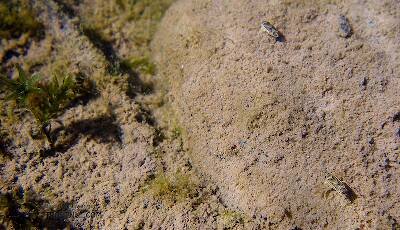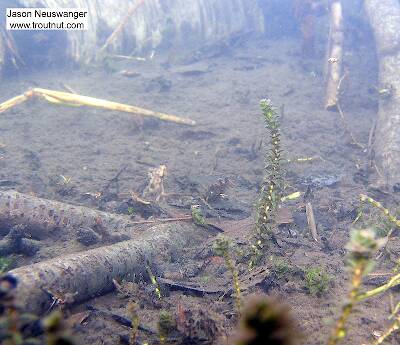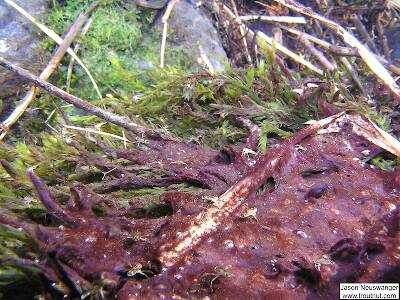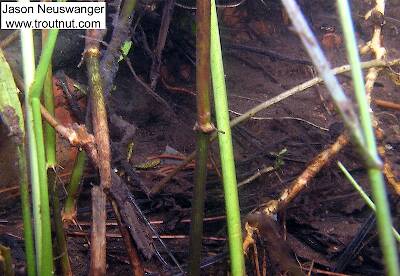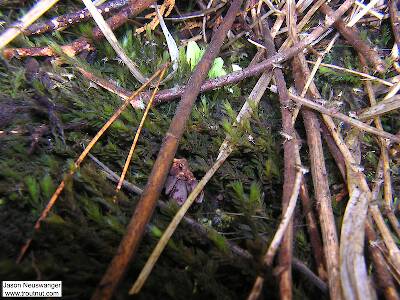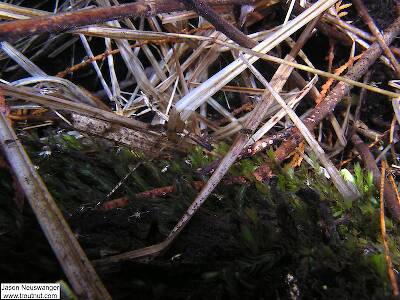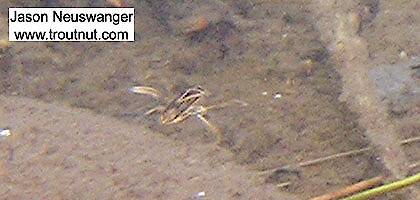
Salmonflies
Pteronarcys californica
The giant Salmonflies of the Western mountains are legendary for their proclivity to elicit consistent dry-fly action and ferocious strikes.
Featured on the forum

Troutnut is a project started in 2003 by salmonid ecologist Jason "Troutnut" Neuswanger to help anglers and
fly tyers unabashedly embrace the entomological side of the sport. Learn more about Troutnut or
support the project for an enhanced experience here.
True Bug Family Corixidae (Water Boatmen)
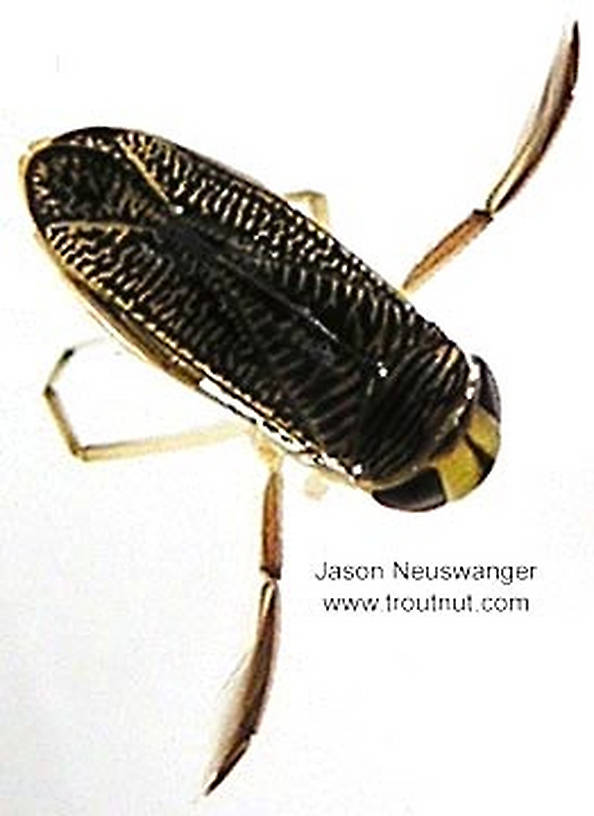
Egg-Laying behavior
Time of day: Afternoon
This is based on my one encounter, so there may be more variation in their behavior and I may have misread something.
Specimens of Water Boatmen:
3 Adults
7 Underwater Pictures of Water Boatmen:
1 Video of Water Boatmen:
Water Boatman Rowing
Water boatmen are excellent swimmers, and you can see here how they use their oars to push themselves through the water, a motion easily imitated by the fly fisher.
Featuring: Corixidae True Bug Adult



